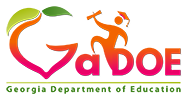Common adapted writing paper and surfaces include paper with bold and/or raised lines, paper with colored areas to visually define the writing area, and personal dry erase boards. Writing guides give students boundaries in which to write. Adapted writing paper and guides help students improve their legibility, writing size and keep their writing on the baseline.
Bold lined paper helps students see the guidelines more easily and stay within them. Raised lined paper helps the students by having an embossed or raised line giving them sensory feedback for the top and bottom lines. Other adapted writing paper may have different colored top, middle and bottom lines to give students cues for beginning and ending letters. And still other adapted paper has shaded areas from the center to the bottom to help students keep lower case letters the appropriate size.
Personal dry erase boards are helpful by allowing students whose handwriting is very light to be easily seen. Dry erase boards are handy for students who need less resistance. Using an erasable crayon on a dry erase board provides increased resistance for students who benefit from increased sensory feedback.
Writing guides provide students with a window in which to write, limiting the boundaries.
A variety of different types of adapted writing paper can be found at Beacon Ridge LLC, Onion Mountain Technology, and Pocket Full of Therapy. A packaged assortment is available from Sammons Preston Rolyan. Writing guides can be found at Onion Mountain Technology and Independent Living Aids.
Adapted writing paper and guides may be beneficial for students who have difficulty writing due to fine motor deficits (poor wrist/hand position, decreased fine motor strength), visual impairments, and sensory or perceptual processing problems.

